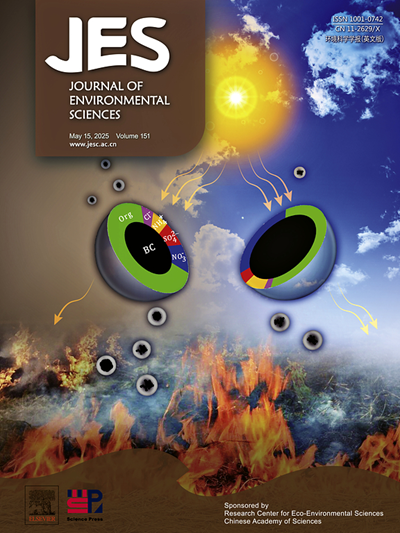Advancements in membrane technology for efficient POME treatment: A comprehensive review and future perspectives
IF 5.9
2区 环境科学与生态学
Q1 ENVIRONMENTAL SCIENCES
引用次数: 0
Abstract
The treatment of POME related contamination is complicated due to its high organic contents and complex composition. Membrane technology is a prominent method for removing POME contaminants on account of its efficiency in removing suspended particles, organic substances, and contaminants from wastewater, leading to the production of high-quality treated effluent. It is crucial to achieve efficient POME treatment with minimum fouling through membrane advancement to ensure the sustainability for large-scale applications. This article comprehensively analyses the latest advancements in membrane technology for the treatment of POME. A wide range of membrane types including forward osmosis, microfiltration, ultrafiltration, nanofiltration, reverse osmosis, membrane bioreactor, photocatalytic membrane reactor, and their combinations is discussed in terms of the innovative design, treatment efficiencies and antifouling properties. The strategies for antifouling membranes such as self-healing and self-cleaning membranes are discussed. In addition to discussing the obstacles that impede the broad implementation of novel membrane technologies in POME treatment, the article concludes by delineating potential avenues for future research and policy considerations. The understanding and insights are expected to enhance the application of membrane-based methods in order to treat POME more efficiently; this will be instrumental in the reduction of environmental pollution.
高效 POME 处理膜技术的进步:全面回顾与未来展望
由于聚乙烯的有机含量高,组成复杂,其污染处理非常复杂。膜技术是去除POME污染物的一种重要方法,因为它可以有效地去除废水中的悬浮颗粒、有机物和污染物,从而产生高质量的处理废水。通过膜推进实现高效的POME处理和最小的污染,以确保大规模应用的可持续性是至关重要的。本文综合分析了膜技术处理POME的最新进展。讨论了正向渗透、微滤、超滤、纳滤、反渗透、膜生物反应器、光催化膜反应器等多种膜类型及其组合的创新设计、处理效率和防污性能。讨论了自修复膜和自清洁膜等防污膜的策略。除了讨论阻碍新型膜技术在POME治疗中广泛应用的障碍外,文章最后还描述了未来研究和政策考虑的潜在途径。这些认识和见解有望加强基于膜的方法的应用,以便更有效地治疗POME;这将有助于减少环境污染。
本文章由计算机程序翻译,如有差异,请以英文原文为准。
求助全文
约1分钟内获得全文
求助全文
来源期刊

Journal of Environmental Sciences-china
环境科学-环境科学
CiteScore
13.70
自引率
0.00%
发文量
6354
审稿时长
2.6 months
期刊介绍:
The Journal of Environmental Sciences is an international journal started in 1989. The journal is devoted to publish original, peer-reviewed research papers on main aspects of environmental sciences, such as environmental chemistry, environmental biology, ecology, geosciences and environmental physics. Appropriate subjects include basic and applied research on atmospheric, terrestrial and aquatic environments, pollution control and abatement technology, conservation of natural resources, environmental health and toxicology. Announcements of international environmental science meetings and other recent information are also included.
 求助内容:
求助内容: 应助结果提醒方式:
应助结果提醒方式:


